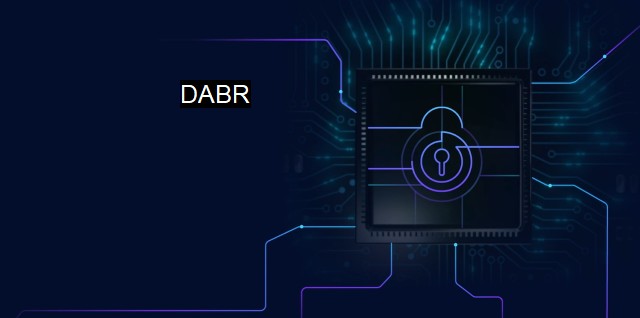What is DABR?
Exploring DABR: The Key to Securing Sensitive Data at Rest in the Digital Age of Cybersecurity and Antivirus
DABR, or Direct Autonomous Boot Recovery, is a widely acclaimed safety protocol within the field of cybersecurity and antivirus technologies. It is a prime example of the many automated processes and systems devised to detect, counter and eliminate cyber threats.Considering that the field of cyber security is intertwined with a multitude of digital services made accessible on both professional and personal domains, initiatives like DABR make provision for strengthening these sectors in an operational sense. This is paramount in guaranteeing optimum performance and safety of their respective software environments.
The essence of DABR is rooted in immediate threat detection and autonomous recovery capabilities. Each system or device that utilizes DABR technology is ingrained with the ability to recognize a threat, recover by its own, and recompense from potential damages that could statistically lead to temporally affected productivity, or worse, security breaches.
With an ever-growing range of cyber threats, from ransomware to spyware, botnets, and DDoS attacks, antivirus solutions have taken center stage in combating these threats. In this context, DABR provides cybersecurity systems with a much-needed edge with its sophisticated threat detection mechanism, which works directly at the system boot level.
Antivirus applications with a DABR functionality understand how viruses and threats intrude a system. They keep track of and monitor the system boot records, which often act as gateways for malicious software. DABR gives the power to the devices or systems themselves to automatically scan for any irregularity in these boot records and restore them autonomously if altered.
This is particularly crucial and beneficial in today’s data-driven era, where information is created and shared continuously. The significant amount of data businesses and individuals deal with occasionally houses potential security risks, which if left unchecked, could lead to catastrophic losses and damaged public trust.
What sets apart DABR from a standard antivirus protocol is its ability to operate right from the system launch or “boot” phase. While the system is powering up, DABR starts off by inspecting the boot records. This crucial first step helps preemptively tackle cyber threats and minimizes the risk of penetration for malicious substances lurking to infect systems. The self-reliant recovery process negates the need for external interventions, saving valuable time and resources—which proves beneficial when threats are sophisticated and swiftly evolving.
Indeed, DABR goes beyond the typical reach of conventional security measures by providing protection right from the bootstrap level. This is vital for preserving the integrity of system applications and preventing attacks at one of the most vulnerable points. Such a proactive approach bolsters the defense against predatory cyber threats and helps eliminate further spread within the system network.
Another significant aspect of DABR is its advanced remediation capabilities. It does so by launching a protective environment that shelters the system components to examine potential threats, curate effective solutions and step in instantaneously to control deterioration of the system security.
DABR, with its autonomous boot recovery, puts a robust foot forward in the antivirus community, providing an aggressive, protective guard at a central vulnerability point of systems—a necessary design for the increasing sophistication of current and developing cyber threats. By integrating DABR technology into existing protective measures, there seems to be an optimistic move towards attaining a long-standing, virtual layer of cybersecurity for sensitive, high-risk digital platforms.

DABR FAQs
What is dabr in cybersecurity?
In cybersecurity, dabr refers to a type of malware that is designed to evade detection by popular antivirus software.How does dabr work?
Dabr works by using various techniques to disguise its presence, such as modifying its own code or hiding in legitimate system files. This makes it difficult for antivirus software to detect and remove the malware.What can I do to protect my computer from dabr?
To protect your computer from dabr and other types of malware, it is recommended to use a reputable antivirus software that is regularly updated, avoid opening suspicious emails or downloading unknown attachments, and keep your operating system and other software up to date with the latest security patches.What are the potential consequences of a dabr infection?
A dabr infection can lead to serious consequences, such as data theft, financial loss, and system damage. It is important to take proactive steps to protect your computer and prevent infection by following best practices for cybersecurity.Related Topics
Malware detection Anti-malware software Endpoint security Ransomware protection Vulnerability scanning
| | A | | | B | | | C | | | D | | | E | | | F | | | G | | | H | | | I | | | J | | | K | | | L | | | M | |
| | N | | | O | | | P | | | Q | | | R | | | S | | | T | | | U | | | V | | | W | | | X | | | Y | | | Z | |
| | 1 | | | 2 | | | 3 | | | 4 | | | 7 | | | 8 | | |||||||